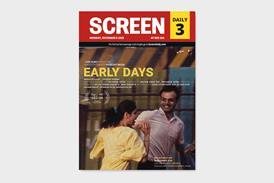
India’s micro drama (or vertical video) industry is a fast-moving and evolving market with, as yet, few clear winners, delegates at Waves Film Bazaar were told on Monday.
“Audiences are scared of commitment because there is so much choice. We are accustomed to mindless scrolling and some businesses have managed to monetise this,” said Tarun Sawhney, APAC president of Shorts TV. “This is just the beginning.”
“So far, romance, CEO and drama [genres] have dominated, but audiences are already getting tired of these. They are ready for more mature and wider genres. That’s why thriller and horror-mystery are growing,” said Vijay Koshy, president of The Viral Fever, a 13-year-old high-volume production company that has weighed up, but not yet plunged into, micro dramas.
“Mills & Boon [romance] type stories initially dominated because 24-to 34-year-old women were the target group,” said Sawhney. However, the micro drama market is evolving and he envisages that non-fiction genres could soon succeed.
“Data from Latin America [where the vertical video trend may be more developed than India] shows that audiences there were previously 90% women. But that may have fallen to 70% and we see thriller and horror genres coming in,” said Sawhney.
The vertical drama movement may have originated in the US and Jeffrey Katzenberg’s defunct Quibi, but today it is most developed in China. There, it may already be a $7-8bn revenue market, making it bigger than theatrical feature films.
In China, artificial intelligence (AI) is being heavily deployed to develop scripts that are punctuated by cliffhanger moments roughly every 90 seconds, to create low-cost sets and to accelerate post-production.
“AI is going to play a huge role in India, too. It gives flexibility in building for the [narrative] world. And it may permit more bespoke content,” said Sawhney.
“We are already using AI as a tool for post-production but it is not a part of the creative process. For that, we still want humans,” said Koshy.
“We have seen cricket evolve from the days when five-day test matches were the gold standard, to one-day matches and now 40-over games. Entertainment is going the same way,” said Koshy. “The next big thing will be when established filmmakers get into the [micro drama] sector.”
























No comments yet